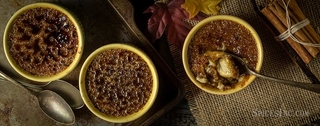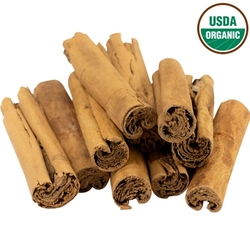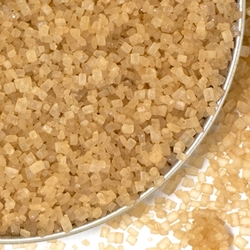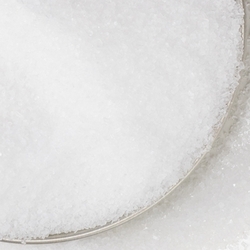Watalappan
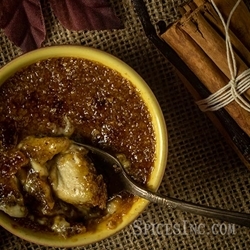
Watalappan (WAHT-a-lahp-un) —also known as watalappam or vattalappam—is a silky-smooth, creamy, egg-based custard and a relative of the crème caramel family, and it is the inspiration behind this dish today. Bearing no small resemblance to flan and crème brulee, its more famous cousins, watalappan is much-beloved dessert across the island of Sri Lanka. Formerly called Ceylon, Sri Lanka is a small, teardrop-shaped island nation off the southeast coast of India, and it has been at the crossroads of civilization for hundreds, if not thousands, of years.
Today, watalappan is readily available in Sri Lanka, but this was not always the case. Food historians believe that watalappan didn’t make an appearance in Sri Lankan kitchens until the 1700s. During that era, both Sri Lanka and the Malay archipelago were ruled by Dutch colonizers. A sizable number of Malay soldiers were stationed in Sri Lanka to maintain Dutch control, as well as Malay political prisoners or nobles in exile who settled in Sri Lanka and never left. Called “Sri Lankan Malays”, they brought with them a dessert they called by the Dutch word vla, which means “custard” or “pudding”. Vla was a fusion dessert with Dutch and Malay influences. Along with the eggy Dutch custard, it took its flavors from a Malay treat called serikaya, which is more like a jam and is served on a bed of sweetened sticky rice. The Sri Lankan Malays eventually dropped the word vla and renamed this using the local Tamil terms vattil, “cup”, and appam, “cake”, which has since turned into watalappan.
We wanted to make Organic Ceylon Cinnamon the star of this dish. Watalappan is traditionally flavored with Cardamom, but we really wanted to highlight the beautiful floral top notes and sweet earthiness that’s a hallmark of delicate Ceylon Cinnamon. We play it up against a background of sweet eggs and cream, while we let Madagascar Vanilla boost the floral notes. Smoky Lapsang Souchong provides the depth that prevents this dish from being too delicate, but never steals the spotlight away from the cinnamon.
As for cooking, we recommend that you set the watalappan in a bain marie. This is a fancy way of saying “water bath,” and it creates a steamy environment that allows custards and other temperamental foods to cook gently and evenly. Trying to cook a custard in a dry-heat oven can make for uneven cooking; the top of the custard easily dries and cracks, while the bottom tightens up into clumps, turning a silky dessert into sweet, scrambled eggs. As an added bonus, you don’t need to buy a new piece of equipment to make a bain marie, you just need a baking dish with high enough sides in which to pour hot water. Set the ramekins in the dish, pour hot water in, and (CAREFULLY!) place the whole thing inside a pre-heated oven.
Don’t try to rush this dish. Let the cinnamon, vanilla, and tea steep for a long time, so the milk is richly infused with flavor. Give the custard the right amount of time to set in the oven. Then, give it plenty of time to chill in the fridge. Once it’s fully cooled, top with sugar and torch the sugar until it’s a hard brown glaze, and if you don’t have a kitchen torch then pop the watalappan under the broiler to brown the sugar, but don’t take your eyes off of it! It should brown very quickly, and once that starts it can burn easily. Enjoy the sugary snap of the sugar coating when you push your spoon into the dish, and dig in to the textures and flavors of Sri Lanka.
- 2 Madagascar Vanilla Beans
- 4 Organic Ceylon Cinnamon Sticks, divided
- 2 teaspoons Lapsang Souchong tea
- ½ teaspoon Fine Sea Salt
- 2 cups heavy cream
- 5 egg yolks
- ½ cup plus 2 Tablespoons Demerara Sugar, divided
1. Place 4, 6-oz ramekins in a baking dish with high sides and set aside.
2. Split the Madagascar Vanilla Beans and add to a pot along with 2 crumbled Organic Ceylon Cinnamon Sticks, Lapsang Souchong, Fine Sea Salt, and heavy cream. Bring to a gentle simmer, then cover the pot and remove from heat. Allow mixture to infuse flavors for at least 1 hour. Strain the solids and reserve the cream mixture.
3. Preheat oven to 325°F.
4. Whisk the egg yolks and Demerara Sugar in a mixing bowl until smooth, then gradually whisk in the cinnamon cream.
5. Boil a kettle of hot water. Divide the custard mixture evenly between the 4 ramekins. Pour enough hot water into the baking dish to cover the ramekins halfway.
6. Bake in a 325°F oven for 35 to 40 minutes, until the consistency resembles Jell-o.
7. Refrigerate ramekins for at least 3 hours to set the custard.
8. Grind the 2 remaining Organic Ceylon Cinnamon Sticks in a spice or coffee grinder until a fine powder is formed.
9. 10 minutes before serving, remove ramekins from the refrigerator and dust with the ground Ceylon Cinnamon. Take remaining Demerara Sugar and sprinkle a thin layer of sugar on top of each custard. Brown the sugar underneath a broiler or with a kitchen torch, until a crisp dark crust is formed.

